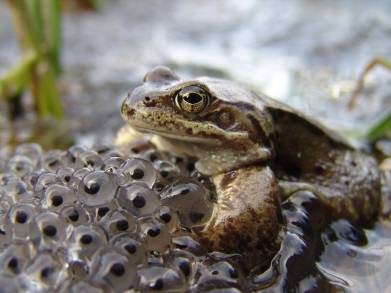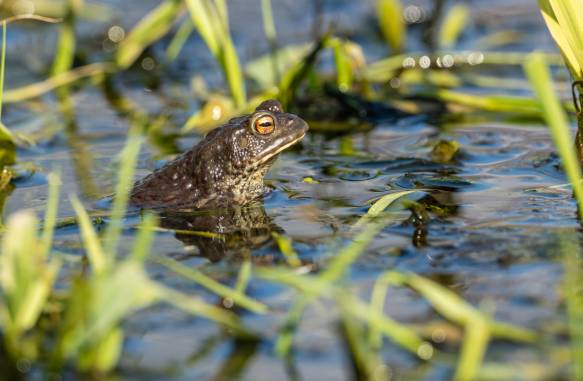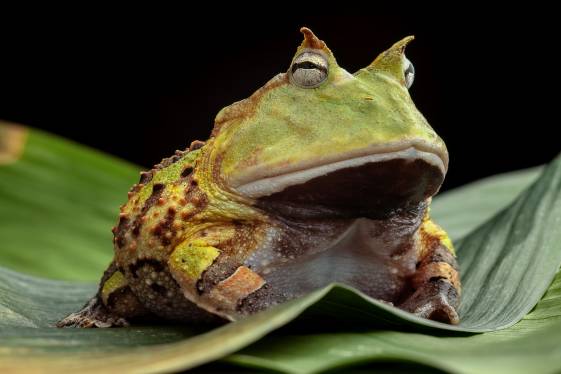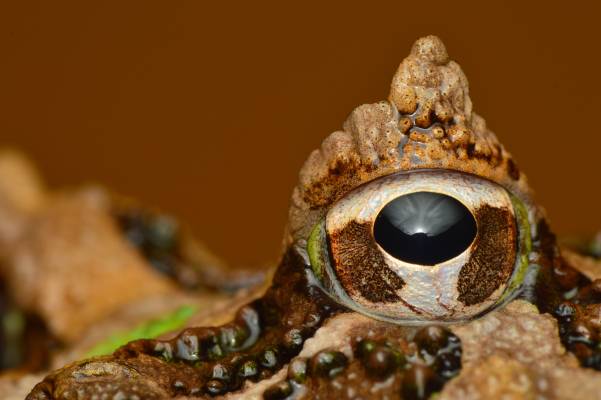Connect with a verified veterinarian in minutes. Licensed vets are available 24/7 to answer your questions. No need to worry about your furry family member.
Have you ever wondered about frogs and their eggs? You might if you’ve found some strange eggs in the wild or in your garden pond. You may also be curious about frog eggs if you’re looking to mate a breeding pair of frogs. Whatever your curiosity about frog eggs, we’ll help you out in this article!
We’ll take a look at various facts about frog eggs, including what they look like! Let’s get started!
Do Female Frogs Become Pregnant?
No, they don’t. Female frogs don’t become “pregnant” in the same sense that mammals do. However, a female frog will develop eggs inside her. However, because the eggs are fertilized and develop outside her body, we really don’t say a frog is pregnant.
How Can You Tell if a Frog is Carrying Eggs?
If you have a female pet frog, you may notice that her abdomen seems to be getting larger. It may look as if she’s carrying fat in her abdomen. While it could be she’s getting fat, there’s also a good chance she could be carrying eggs.

Review symptoms, medications & behavior to keep your pets healthy with a Vet Online in just minutes.
Ask a Vet Live NowWhat is Frogspawn?
Frogspawn is the gelatinous stuff you may find in your garden pond, frog tank, or in streams and ponds in nature. Frogspawn is actually frog eggs—that’s it!
The eggs are usually floating in the water or may be attached to an aquatic plant. The frogspawn is made of thousands of eggs that contain a very tiny black tadpole embryo (baby frog or also called a froglet). Each embryo is encased by a gel-like substance, which works to protect the developing embryo and keep it moist. This is what frog eggs look like!
If you Find Frogspawn, Can You Take It Home?
The answer depends on where you live. In many places, frogs are a protected species. This makes it illegal to remove the frogs or their eggs from the wild. However, in other places, you may seek the permission of the landowner to take the frogspawn.
If you do this, then bear in mind it may still be illegal to make any profit from the raising and selling of tadpoles or adult frogs.
So, before taking frogspawn from the wild, be sure to check the laws where you live. Ultimately, it’s best to leave frog eggs where you find them. Frogs are an important species in the cycle of nature. They help to control insect levels and much more in their habitat. They also provide food for other animals.
Where Do Frogs Lay Their Eggs?
The answer depends on the species of frogs. Some lay their eggs in slow-moving streams or in ponds. Then there are tree frogs who lay their eggs on the underside of a leaf! When the tadpoles are ready to begin living in water, they come out of their eggs and drop into the water below! How amazing!
Then there are other frog species who choose to lay their eggs in water puddles that form after rain. And there some frogs who carry eggs on their back as the embryos develop!
The main thing is that most frogs must lay their eggs in or near the water. That’s because the embryos in the eggs must go through the process of changing from tadpoles to adult frogs, which is called metamorphosis.
How Many Eggs Does a Frog Lay?
A female frog may lay anywhere between 2,000 to 20,000 eggs! Why so many? The answer is that frog eggs are seen as food by other animals. This includes fish, some bird species, and more.
Another reason is that there’s no assurance the eggs will survive. It may be that only some of the eggs will result in adult frogs.
For these reasons, frogs must lay thousands of eggs just to ensure some will grow up to become adult frogs. Scientists have determined that only one in fifty eggs will survive and grow into a tadpole. Those are not great odds. That means that if a frog lays 20,000 eggs, only 400 will grow into tadpoles. The survival rate is just as harsh for the tadpoles, which are also seen as food for other animals.
Just to survive, frogs have to lay thousands of eggs so that some will survive to carry on the species.
Do Frogs Stay With Their Eggs?
Most frog species only lay their eggs and then leave. However, there are some exceptions to the rule. There are some frog species that stay around to take care of their young or at least protect their eggs.
For instance, male bullfrogs protect their tadpoles from other predators. They even create paths for the tadpoles to move from pond to pond, so they don’t die if the water dries up!
Then there are frogs that carry their eggs on their back. The Surinam toad is a frog, which carries her eggs on her back. The eggs grow into the frog’s skin until they hatch. When ready, the tadpoles will drop off her back and into the water.
The male Darwin frog, for instance, broods (incubates) the eggs his vocal sac. Some frog species even sit on their eggs and brood them, much in the same way that birds do.
Then there are frogs that create something like a bubble nest for their eggs. The bubble nest is actually foam, which creates a safe environment for the eggs to develop into tadpoles. Once the foam has been created, the female frog lays her fertilized eggs in the foam. After a time, the foam hardness on the outside, leaving the inside a protective environment for the eggs. After the tadpoles are large enough to go into the water, they simply drop into the water below their foam nest!
As you can see, frogs and their eggs are pretty awesome. Each species of frog has a different method for laying their eggs, while others carry their eggs around and watch over their young.
What’s more, frogs must lay thousands of eggs just to survive! This is one of the reasons it’s best to leave frogspawn in the wild if you find it. Frogs are an endangered species and need to stay in their own habitats. These are the best places for them to live and rear their young, from egg to tadpole.
However, if you have pet frogs and would like to breed them, then this is a fascinating process to watch!
Connect with a verified veterinarian in minutes. Licensed vets are available 24/7 to answer your questions. No need to worry about your furry family member.

Tom
Tom has always loved to write since he was little - he wanted to be either a writer or a veterinary doctor, but he ended up being a professional writer while most of his works are based on animals. He was born in San Francisco but later moved to Texas to continue his job as a writer. He graduated from the University of San Francisco where he studied biotechnology. He is happily married and a soon to be father!
Review symptoms, medications & behavior to keep your pets healthy with a Vet Online in just minutes.
Ask a Vet Live Now




